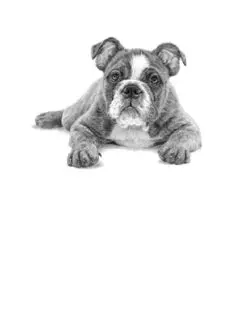
The Art of Drawing Animals: Discover all the techniques you need to know to draw amazingly lifelike animals PDF
Preview The Art of Drawing Animals: Discover all the techniques you need to know to draw amazingly lifelike animals
The Art of Drawing Animals With Patricia Getha, Cindy Smith, Nolon Stacey, Linda Weil, and Debra Kauffman Yaun Designed by Shelley Baugh Project Editors: Meghan O’Dell and Elizabeth T. Gilbert Copyeditor: Rebecca J. Razo Index by Christy Stroud and Meghan O’Dell C ONTENTS I D A NTRODUCTION TO RAWING NIMALS Tools & Materials The Elements of Drawing Basic Pencil Techniques Other Ways to Shade Animal Textures Drawing from Photographs Perspective Basics B A C S ABY NIMALS WITH INDY MITH Bunny Kitten Gosling Foal Doberman Puppy Bear Cub Kitten & Butterfly Fawn Lion Cub Yorkie Puppy Lamb Giraffe Calf D & C N S OGS ATS WITH OLON TACEY Cats in a Bag Bulldog Dachshunds Kittens Cat Portrait Springer Spaniel Puppy Husky Silver Tabby Dalmatian Maine Coon Ocicat Labrador Retriever H & P P G ORSES ONIES WITH ATRICIA ETHA Anatomy & Proportion Basic Profile Study Advanced Profiles Polo Pony Arabian Portrait Appaloosa Foal Standing Foal Cantering Standardbred Trotter American Saddlebred & Rider Gypsy Vanner American Paint Horse Pinto Pony American Morgan Horse Dappled Pony W A L W ILD NIMALS WITH INDA EIL Asian Elephant Australian Barking Owl Tiger Cub Koala Dingo Kangaroo A C P D K Y NIMALS IN OLORED ENCIL WITH EBRA AUFFMAN AUN Colored Pencil Tools & Techniques Rooster Shetland Sheepdog Gray Squirrel Horse Lory Leopard Maine Coon Alpaca Box Turtle Red Fox Bush Baby Cow I NDEX CHAPTER 1 INTRODUCTION TO DRAWING ANIMALS Welcome to the exciting world of drawing animals in pencil! This compilation of projects from some of the most popular Walter Foster titles provides inspiration and instruction for creating a variety of animal drawings, including lovable cats and dogs, majestic horses and ponies, and the wondrous animals of the wild. From the fundamentals of drawing to special tips and advanced techniques, The Art of Drawing Animals is filled with step-by-step demonstrations to guide aspiring artists through the drawing process. There’s even a section on drawing animals in colored pencil, so you can try your hand at another medium. The five artists in this collection have developed their own approach to pencil drawing, so there are countless lessons to be learned from their individual and distinct perspectives. Discover how fun and easy drawing animals can be! T & M OOLS ATERIALS D rawing is not only fun, but it also is an important art form in itself. Even when you write or print your name, you are actually drawing! If you organize the lines, you can make shapes; and when you carry that a bit further and add dark and light shading, your drawings begin to take on a three-dimensional form and look more realistic. One of the great things about drawing is that you can do it anywhere, and the materials are very inexpensive. You do get what you pay for, though, so purchase the best you can afford at the time, and upgrade your supplies whenever possible. Although anything that will make a mark can be used for some type of drawing, you’ll want to make certain your magnificent efforts will last and not fade over time. Here are some materials that will get you off to a good start. Sketch Pads You can buy spiral-bound, stitched, or gum-bound sketchbooks in a variety of sizes. The paper in most sketchbooks is not designed for finished works— sketching is a form of visual note taking, and you should not worry about producing masterpieces with them. You may want to carry a small notebook-sized sketchbook with you so you can sketch whenever the mood strikes. It’s a good idea to carry a larger sketchbook when drawing on location. Paper Drawing paper is available in a range of surface textures: smooth grain (plate finish and hot pressed), medium grain (cold pressed), and rough to very rough. Rough paper is ideal when using charcoal, whereas smooth paper is best for watercolor washes. The heavier the weight of the paper, the thicker it is. Thicker papers are better for graphite drawings because they can withstand erasing far better than thinner papers can. Be sure to purchase acid-free paper, as acid causes paper to turn yellow over time. Sharpeners Clutch pencils (see page 7) require special sharpeners, which you can find at art and craft stores. A regular handheld sharpener can be used for wood- cased and woodless pencils, but be sure to have several sharpeners on hand as these pencils can become dull. You can also purchase an electric sharpener, but it affords less control over the shape of the pencil tip. Work Station You don’t need a professional drafting table to start drawing—many brilliant drawings have been created on a kitchen table! You’ll need a hard surface to use as a drawing board (or purchase a drawing board from an art supply store), and something to prop up the board with, such as a brick or a stack of books. Good lighting is essential—it’s best to work in natural light, but you also can purchase a daylight bulb, which gives off a good white light and eliminates the yellow glare of standard bulbs. Make sure the lighting is direct and that there are no shadows falling across your work area. Also, you’ll want to have a comfortable chair that supports your back.
